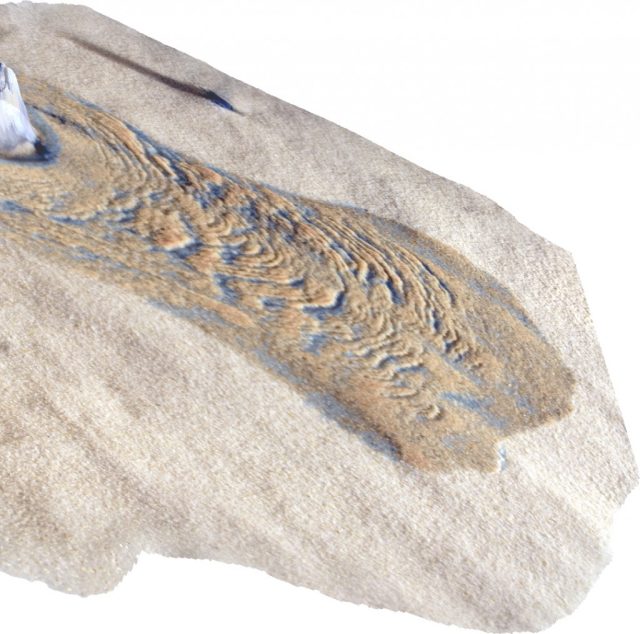
We now know that there is liquid water on the surface of Mars. Streaks of dark material flow down crater walls, appearing and disappearing with the seasons. Imaging from orbit has confirmed that these features contain hydrated salts, leading researchers to conclude that the water took the form of a salty brine, which would prevent it from immediately evaporating into Mars' cold, thin atmosphere.
But a new paper released today argues that we might want to rethink the role of brine. The international team behind it tested what would happen if pure water were flowing through sand under Mars-like conditions. Some of the water boiled off quickly, but it managed to spread a bit further than expected and produced features similar to some that have been imaged from orbit.
There are a number of challenges with figuring out what's happening on Mars. The first is that we've got no hardware anywhere near where the watery features form; all our direct exploration has to take place from orbit. Another challenge is that we don't know the nature of the water. At Martian pressures, pure water could boil at temperatures reached in the daytime and freeze at night, while salts could keep it liquid at the prevalent temperatures.
The team behind the new work decided it could get some sense of what might be going on using a small scale model. They took a small (70g) block of ice and allowed it to melt into sand at 20 degrees Celsius; they later repeated the process with a salt-saturated ice cube. The melting was done under Mars-like atmospheric pressures, and the sand was set up as a 30-degree downward slope, to approximate a crater wall.
With pure water, some of it ended up wetting the sand, darkening it slightly (similar to the appearance of the seasonal features on Mars). Any water that was not on the surface of sand grains tended to boil off, as expected. But the most vigorous boiling occurred just past the front of the wetted sand, where it met the atmosphere.
There, the authors calculated that the water vapor would reach speeds of 100m a second, which is able to blast sand grains right off the surface. This could move sand grains up to 4mm in diameter, and eject them at speeds of about a third of a meter per second. After enough of the sand was blasted away, it created a trough; once that trough got deep enough, the walls of the trough would flow down to re-establish a gentle slope. This process would continue for as long as there was fresh water supplied, creating a repeating cycle of percolation and the dry, granular flow. Over time, this creates a series of ridges and troughs along the path of the flow.
Salty brines, in contrast, had far less of an impact. The water spread more broadly (not surprising, since it remained water instead of boiling off), but didn't travel any further downslope. And, while brines could form channels near the site where the ice melted, these were the only physical changes to the slope. Very little happened when either water or brine was flowing under an Earth-like atmosphere.
Overall, the authors conclude that we shouldn't rule out a role for liquid water (as opposed to salty brines) in shaping Martian terrain. "A small quantity of liquid water reaching the surface," they write, "can have a disproportionate geomorphological impact." That impact, they conclude, is more substantial than any brine can create.
This doesn't mean we have the final explanation for the features we see on Mars. As mentioned above, those are tens of meters in size; the ones produced in this model are only tens of centimeters. Since we're unlikely to image that from orbit, we're going to have to wait until we can get hardware there to image them up close, and see what the fine-scale features look like.
Nature Geoscience, 2016. DOI: 10.1038/NGEO2706 (About DOIs).
reader comments
6